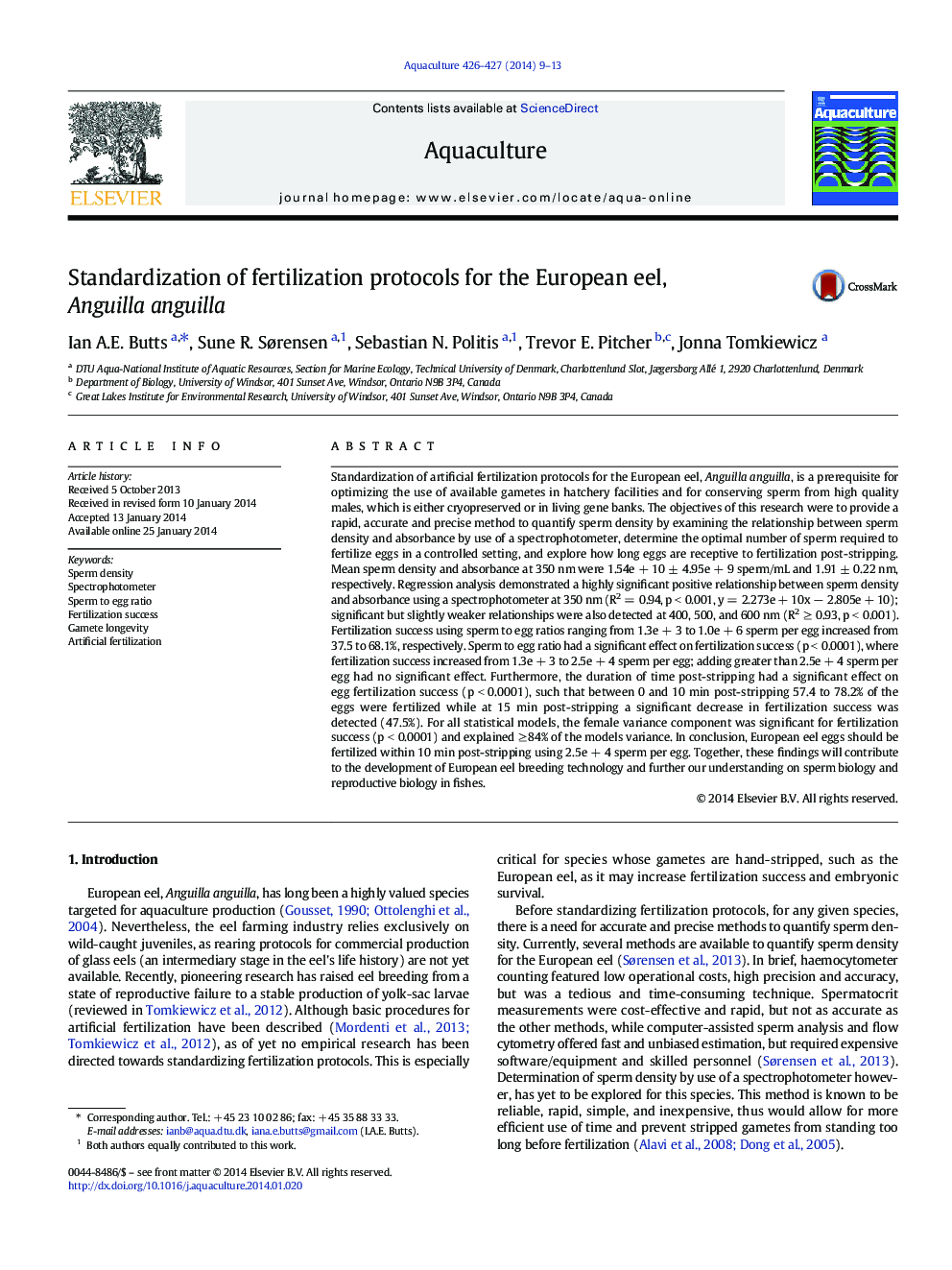| Article ID | Journal | Published Year | Pages | File Type |
|---|---|---|---|---|
| 8495180 | Aquaculture | 2014 | 5 Pages |
Abstract
Standardization of artificial fertilization protocols for the European eel, Anguilla anguilla, is a prerequisite for optimizing the use of available gametes in hatchery facilities and for conserving sperm from high quality males, which is either cryopreserved or in living gene banks. The objectives of this research were to provide a rapid, accurate and precise method to quantify sperm density by examining the relationship between sperm density and absorbance by use of a spectrophotometer, determine the optimal number of sperm required to fertilize eggs in a controlled setting, and explore how long eggs are receptive to fertilization post-stripping. Mean sperm density and absorbance at 350 nm were 1.54e + 10 ± 4.95e + 9 sperm/mL and 1.91 ± 0.22 nm, respectively. Regression analysis demonstrated a highly significant positive relationship between sperm density and absorbance using a spectrophotometer at 350 nm (R2 = 0.94, p < 0.001, y = 2.273e + 10x â 2.805e + 10); significant but slightly weaker relationships were also detected at 400, 500, and 600 nm (R2 â¥Â 0.93, p < 0.001). Fertilization success using sperm to egg ratios ranging from 1.3e + 3 to 1.0e + 6 sperm per egg increased from 37.5 to 68.1%, respectively. Sperm to egg ratio had a significant effect on fertilization success (p < 0.0001), where fertilization success increased from 1.3e + 3 to 2.5e + 4 sperm per egg; adding greater than 2.5e + 4 sperm per egg had no significant effect. Furthermore, the duration of time post-stripping had a significant effect on egg fertilization success (p < 0.0001), such that between 0 and 10 min post-stripping 57.4 to 78.2% of the eggs were fertilized while at 15 min post-stripping a significant decrease in fertilization success was detected (47.5%). For all statistical models, the female variance component was significant for fertilization success (p < 0.0001) and explained â¥Â 84% of the models variance. In conclusion, European eel eggs should be fertilized within 10 min post-stripping using 2.5e + 4 sperm per egg. Together, these findings will contribute to the development of European eel breeding technology and further our understanding on sperm biology and reproductive biology in fishes.
Related Topics
Life Sciences
Agricultural and Biological Sciences
Aquatic Science
Authors
Ian A.E. Butts, Sune R. Sørensen, Sebastian N. Politis, Trevor E. Pitcher, Jonna Tomkiewicz,
